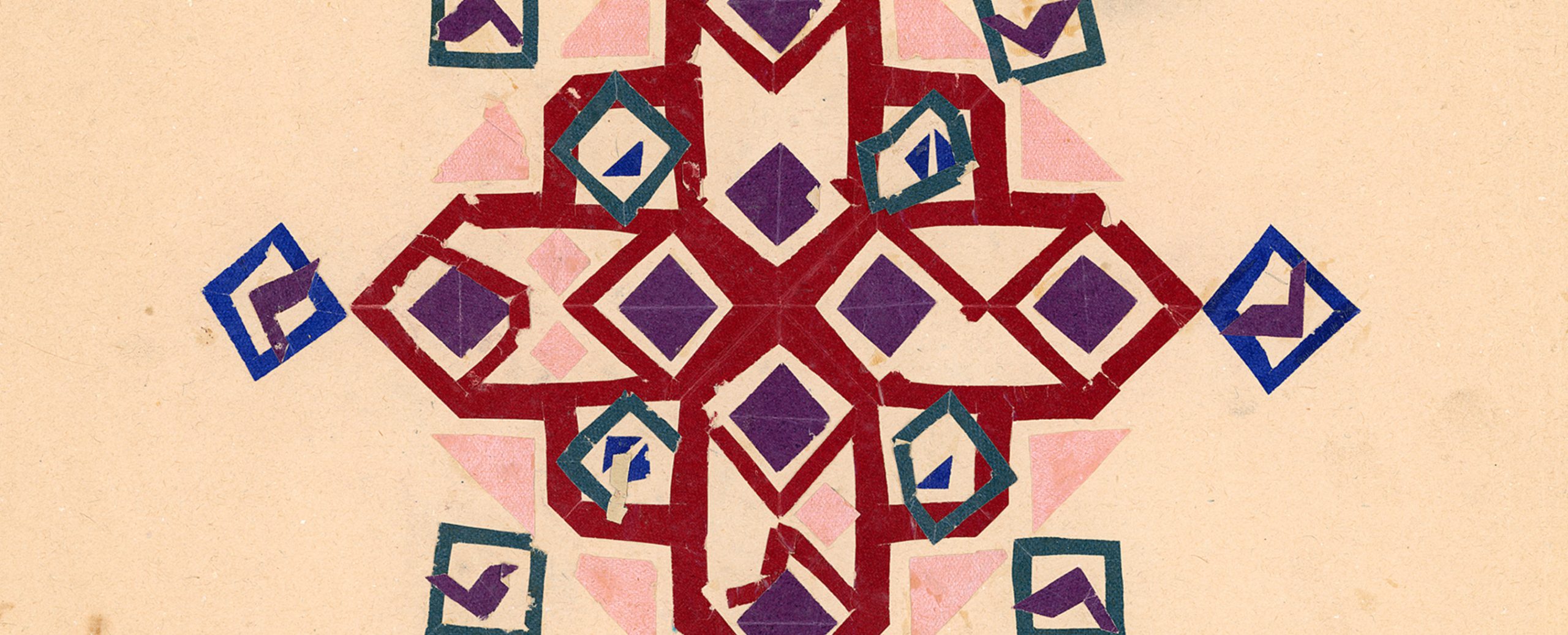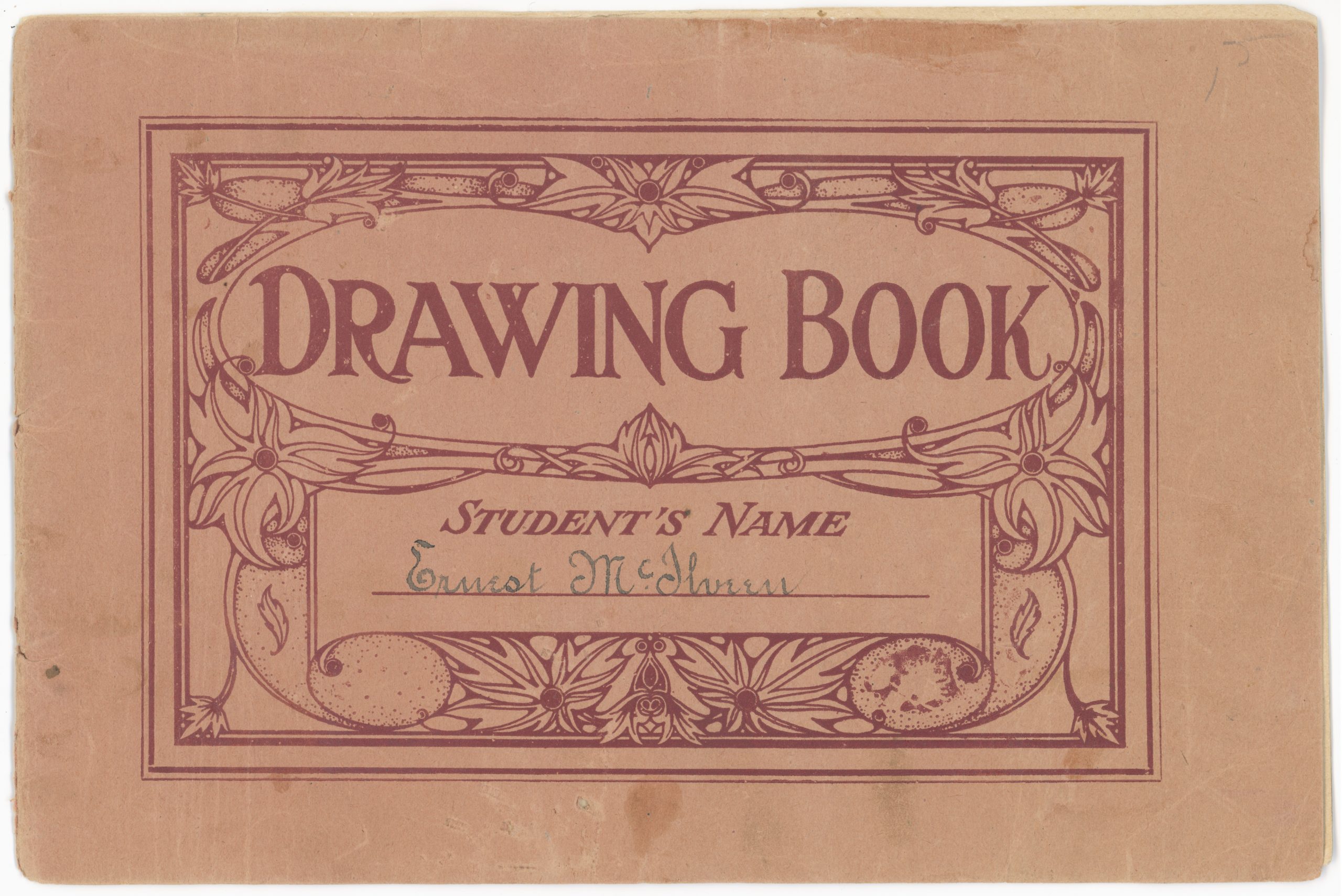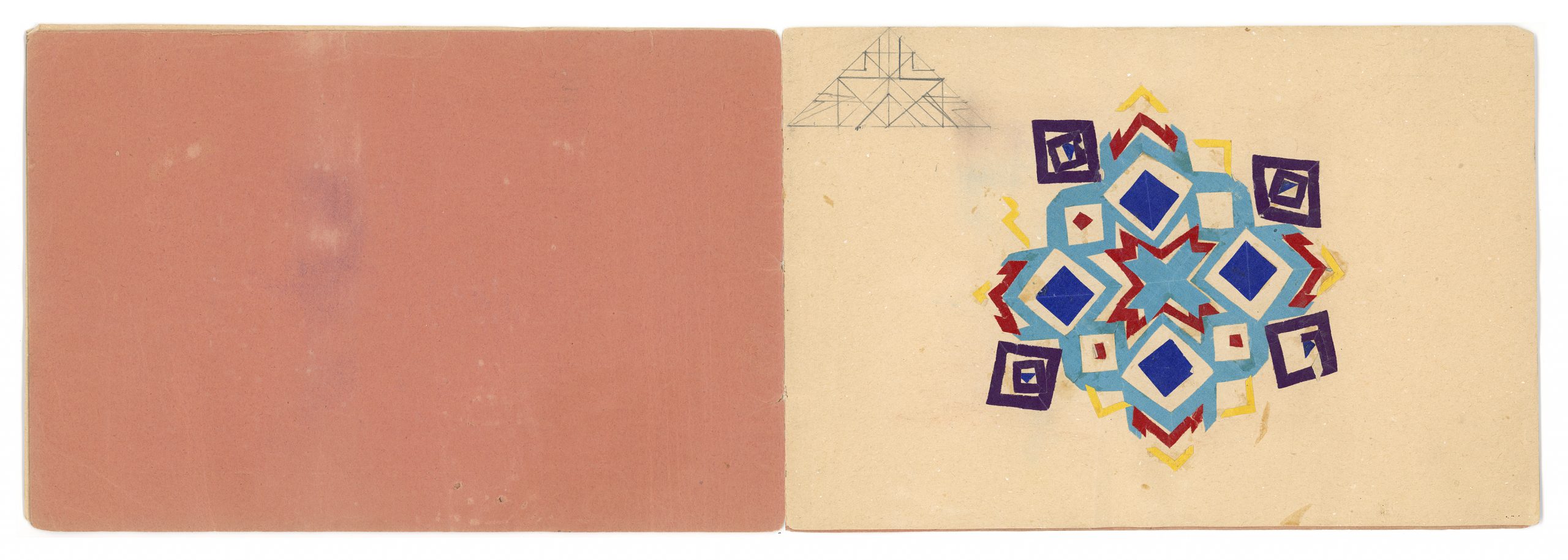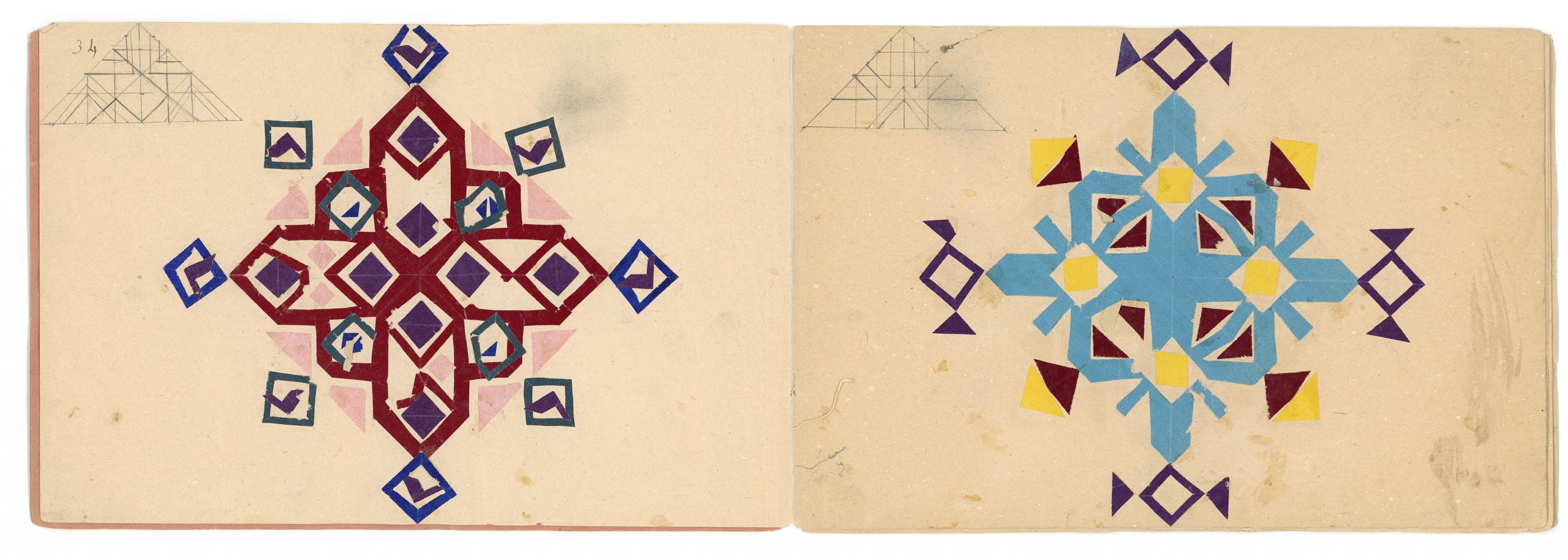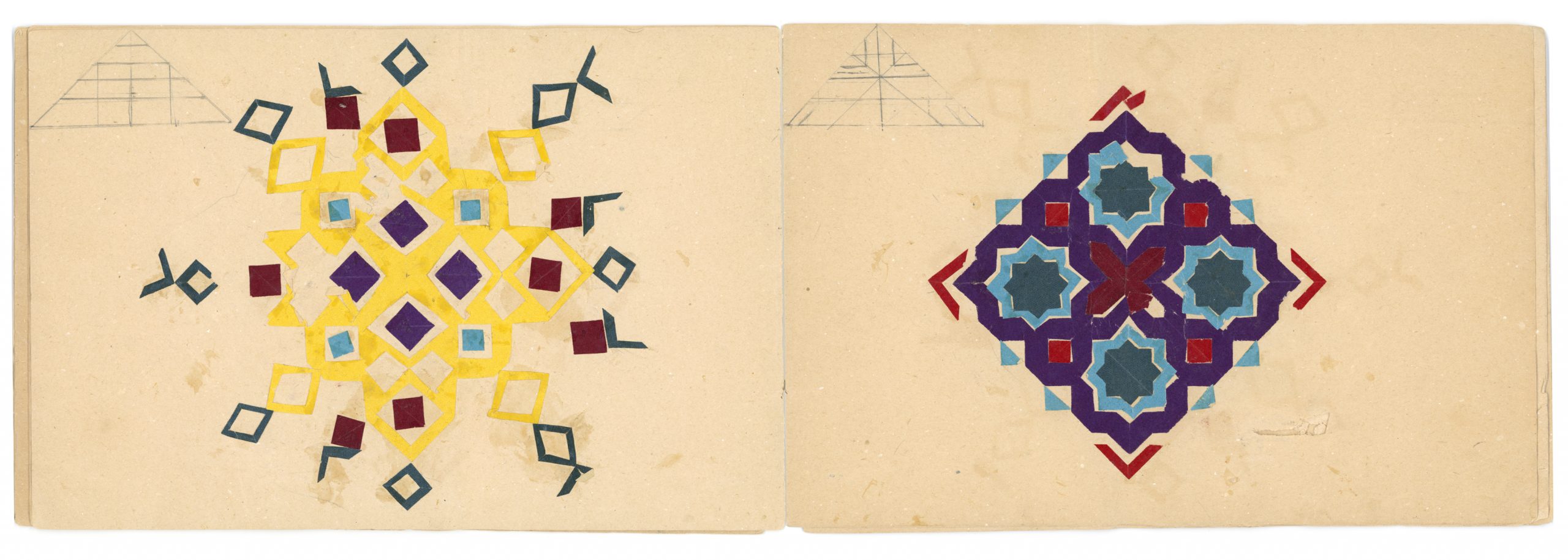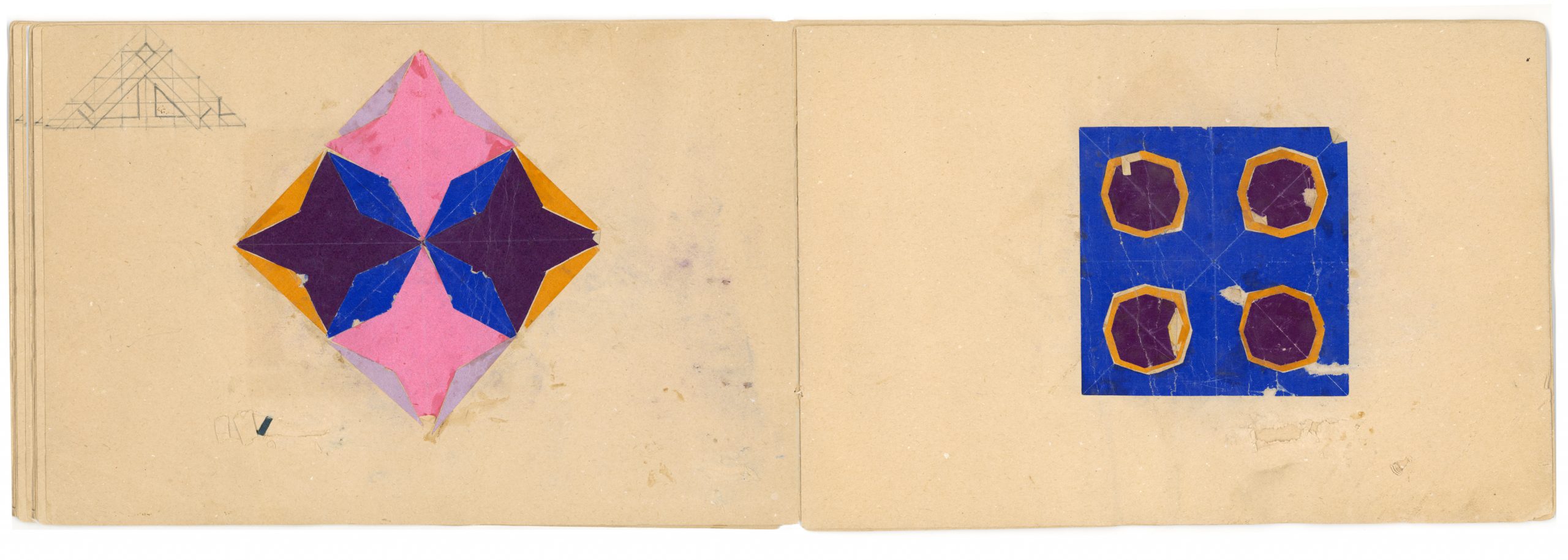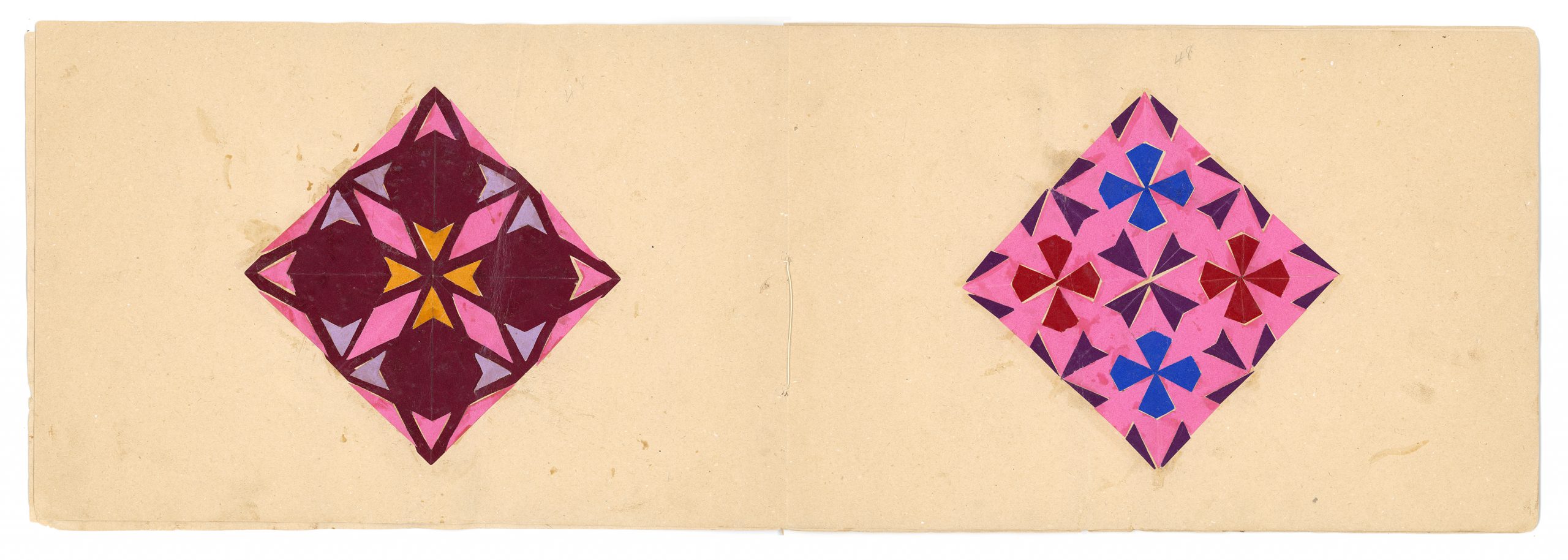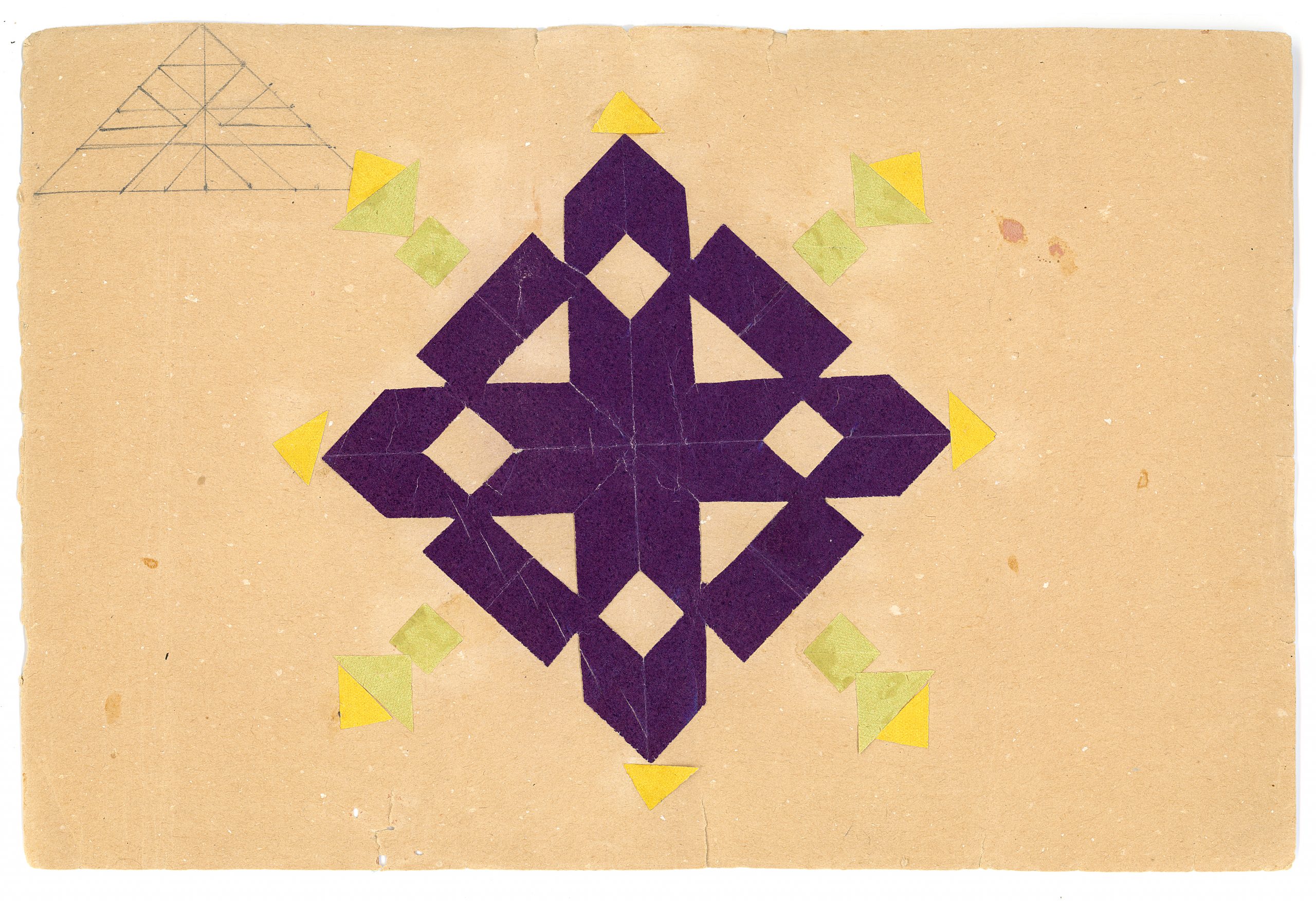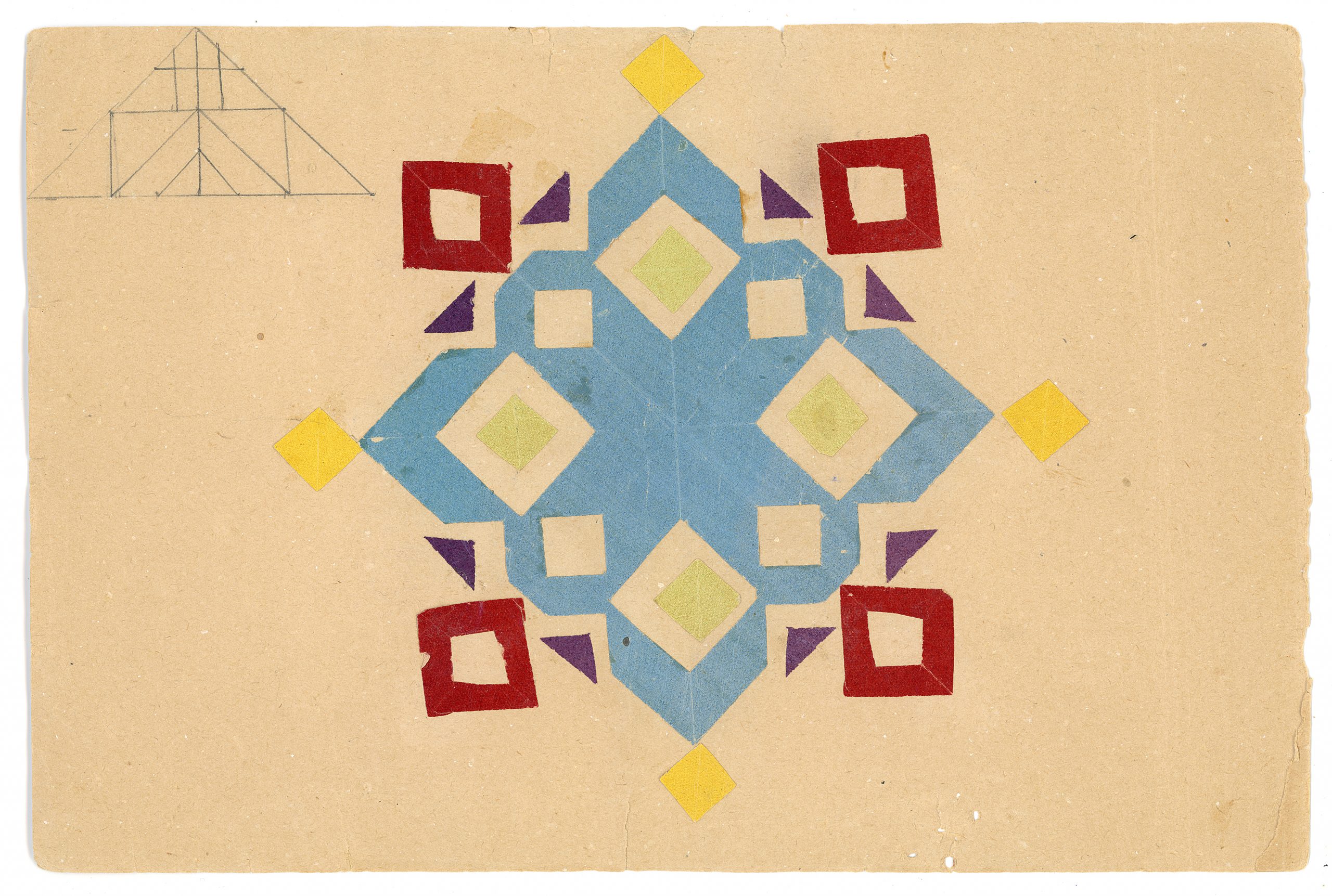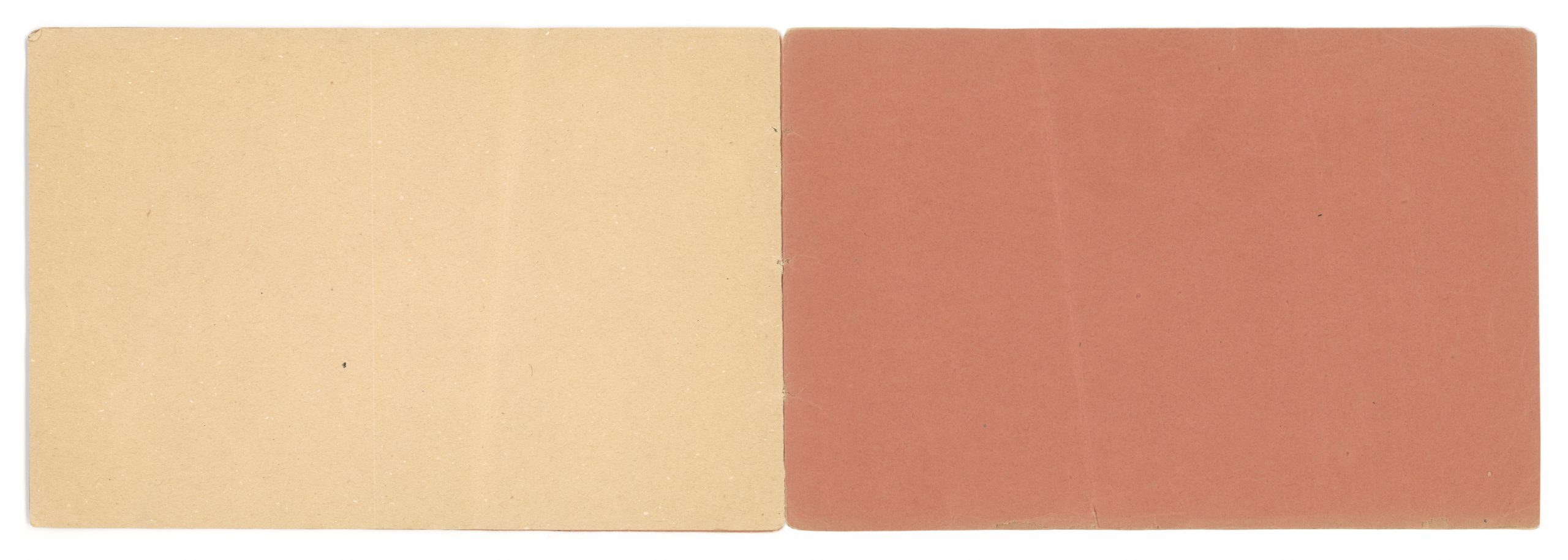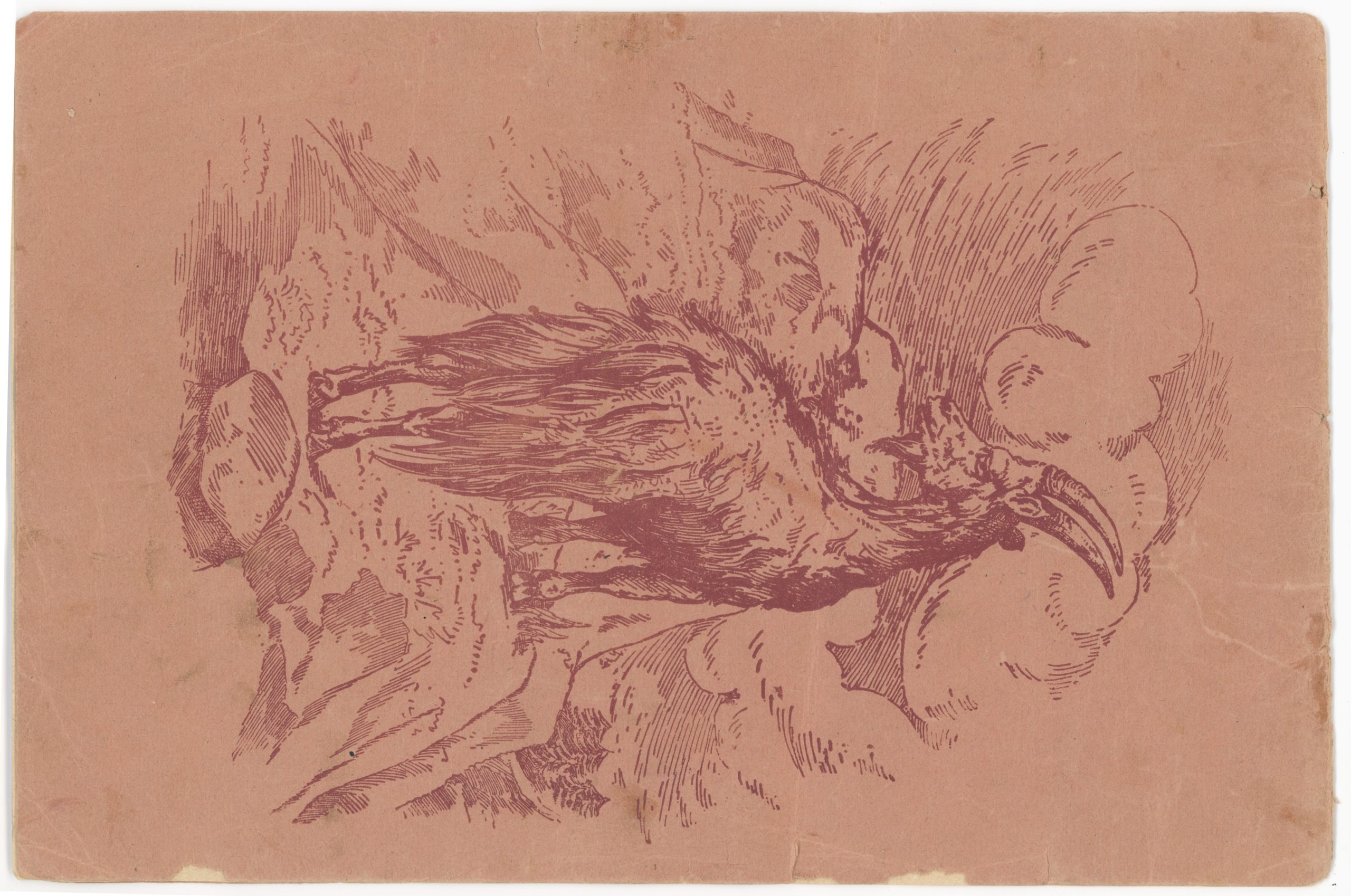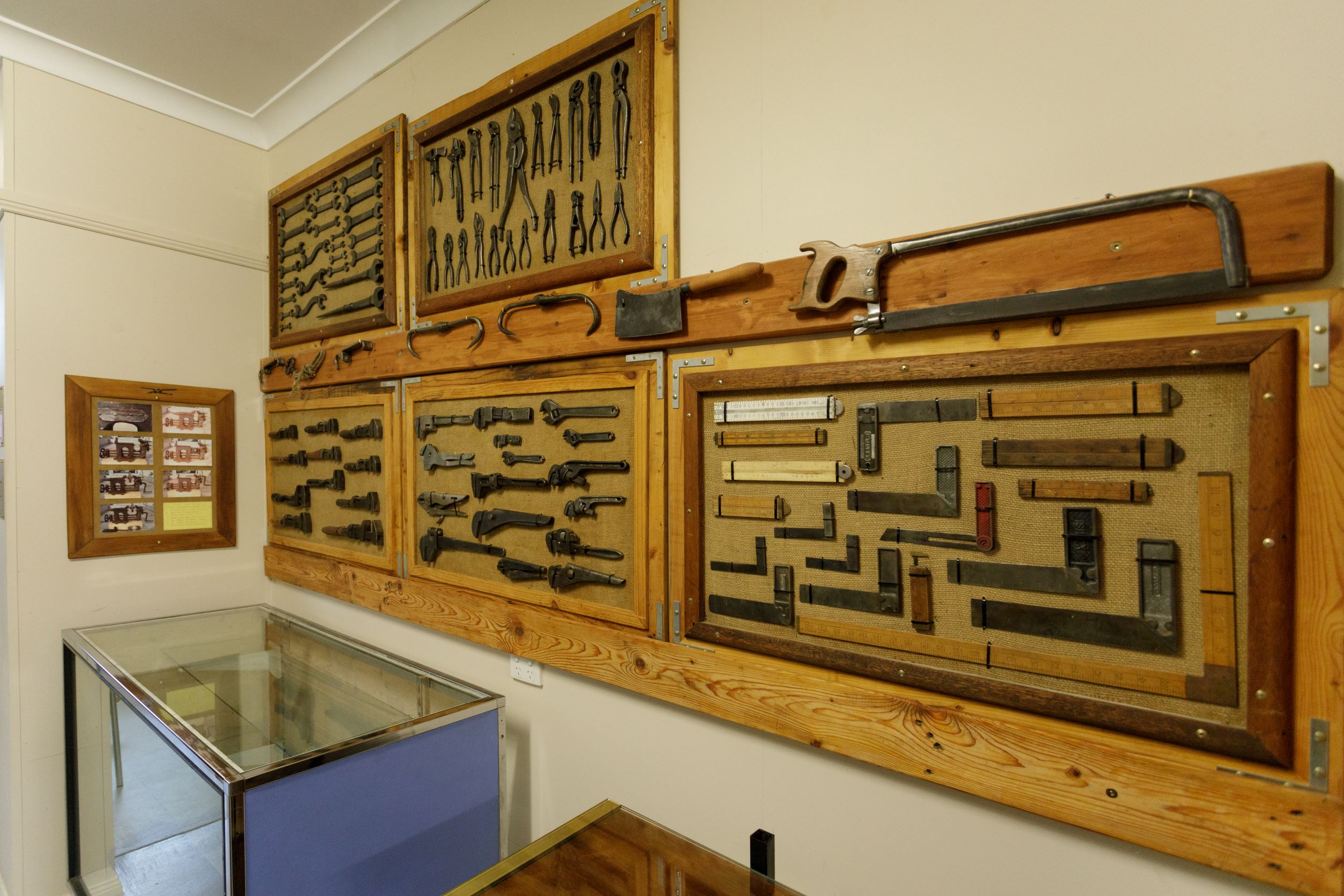Cut and Paste
The Drawings of a Moonbi Student
Ernest McIlveen (1898-1963) might have been around nine years of age when he demonstrated his prowess with scissors in his standard issue drawing book.
Using coloured paper, Ernest diligently made thirteen kaleidoscopic designs, recording six of them in hand drawn graphs in the top left corner with pencil and ruler. He may have made them as mathematical exercises in symmetry and pattern, or perhaps he was simply experimenting with the artistic possibilities of folded paper cut outs.
Ernest was the youngest child of nine siblings and attended Moonbi Public School, near Tamworth. His mother Elizabeth was 43 when he was born. She must have had her hands full with his five older sisters, three brothers – all while working her job as Moonbi’s postmistress.
Ernest was fortunate to be born when he was because, unlike his older siblings, he benefited from a number of recent educational reforms. The primary school syllabus and teacher training system had been modernised in 1903 after a Royal Commission into primary school education.
The Blackfriars Teachers College was established in 1905, giving professional academic training to primary and high school teachers. In 1906, possibly a year or two before Ernest made these designs, the Free Education for Children Act was passed, giving a greater number of children access to free education.
Amidst all these changes, Ernest proved himself a good student. He worked hard enough in his final year to be awarded a scholarship to the Blackfriars Teachers College, Sydney, in 1916.
‘This young man deserves great credit for his success, as he has only been studying for a short time but under the careful guidance of Mr G A Watson, teacher of Moonbi public school, he has made such progress that he will be leaving for Sydney at the end of the week to begin training. Both he and Mr Watson are to be congratulated on his success, as they both must have worked hard to accomplish it in so short a time.’
Ernest became a teacher and taught at Chellas Public School near Tingha, before moving to Cessnock, where he married Ida Matthews in 1940. He died in Cessnock in 1963.


